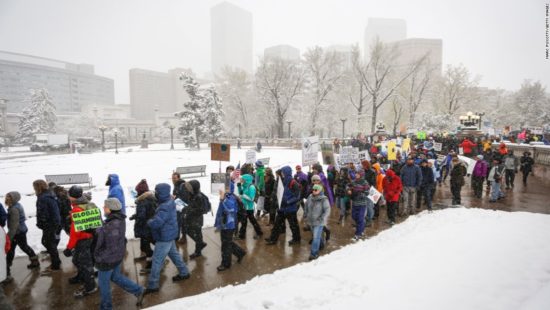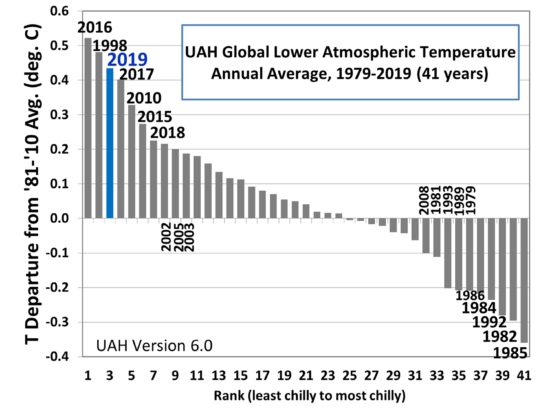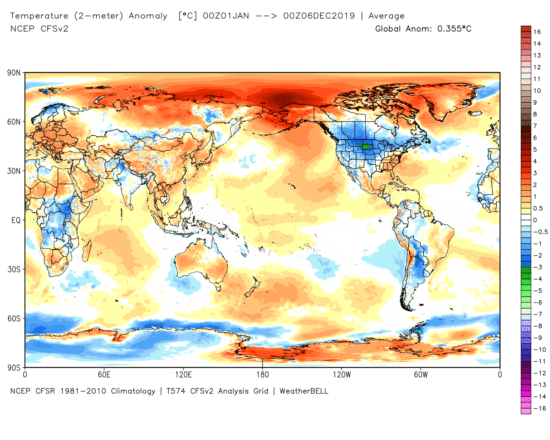
It’s that time of year again, when we are subjected to exaggerated climate claims such as in this Forbes article, 2019 Wraps Up The Hottest Decade In Recorded Human History. Given that the global average surface temperature is about 60 deg. F, and most of the climate protesters we see in the news are wearing more clothing than the average Key West bar patron, I would think that journalists striving for accuracy would use a more accurate term than “hottest”.
So, I am announcing that in our 41-year record of global satellite measurements of the lower atmosphere, 2019 will come in as 3rd least-chilly.

For the decade 2010-2019, the satellite temperatures averaged only 0.15 C higher than in the previous decade (2000-2009). That’s less than a third of a degree F, which no one would even notice over 10 years.
If you are wondering how your neck of the woods has fared this year, the latest year-to-date plot of 2019 temperature departures from the 30-year average (1981-2010) shows the usual pattern of above- and below-normal, with little visual indication that the global average for 2019 is now running 0.36 deg. C above normal.

The use of the term “hottest” to describe recent warming belies the fact that the rate of warming we have experienced in recent decades is minuscule compared to the several tens of degrees of temperature change most people experience throughout the year — and sometimes from one week to the next.
So, how are we supposed to react when the arithmetically-averaged temperature, across all extremes, goes up by only a small fraction of a degree in ten years? With horror? Outrage? Is the term “hottest” in a headline supposed to move us? Seriously?
Should we all get someone to fly across the Atlantic so they can transport us to Europe on a luxury yacht to help Save the Earth™ on our next European vacation?
The click-bait journalism typified by terms like “hottest”, “climate emergency”, and now “climate catastrophe” helps explain why the public is largely indifferent to the global warming issue, at least if we are asked to spend more than a few dollars to fix it.
This is why the alarmist narrative has moved on from temperature, and now focuses on wildfires, droughts, floods, hurricanes, snowstorms, and sea level rise. Yet, none of these have worsened in the last 100 years, with the exception of global sea level rise which has been occurring at a rate of about 1 inch per decade for as long as it has been monitored (since the 1850s, well before humans could be blamed).
And, just in case some new visitors to my blog are reading this, let me clarify that I am not a denier of human-caused climate change. I believe at least some of the warming we have experienced in the last 50 years has been due to increasing carbon dioxide. I just consider the fraction of warming attributable to humans to be uncertain, and probably largely benign.
This is fully consistent with the science, since the global energy imbalance necessary to explain recent warming (about 1 part in 250 of the natural energy flows in and out of the climate system) is much smaller than our knowledge of those flows, either from either theoretical first principles or from observations.
In other words, recent warming might well be mostly natural.
We just don’t know.

 Home/Blog
Home/Blog



